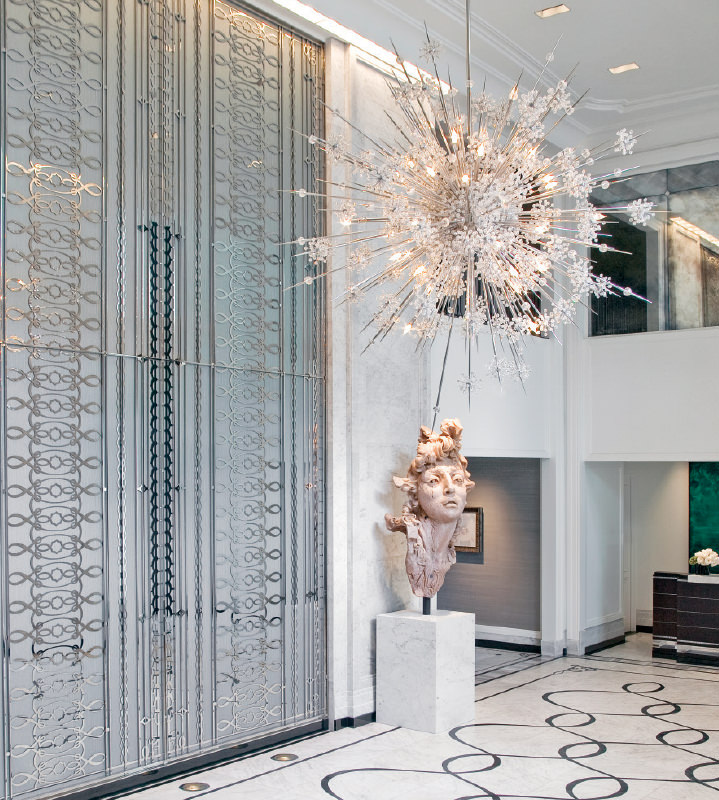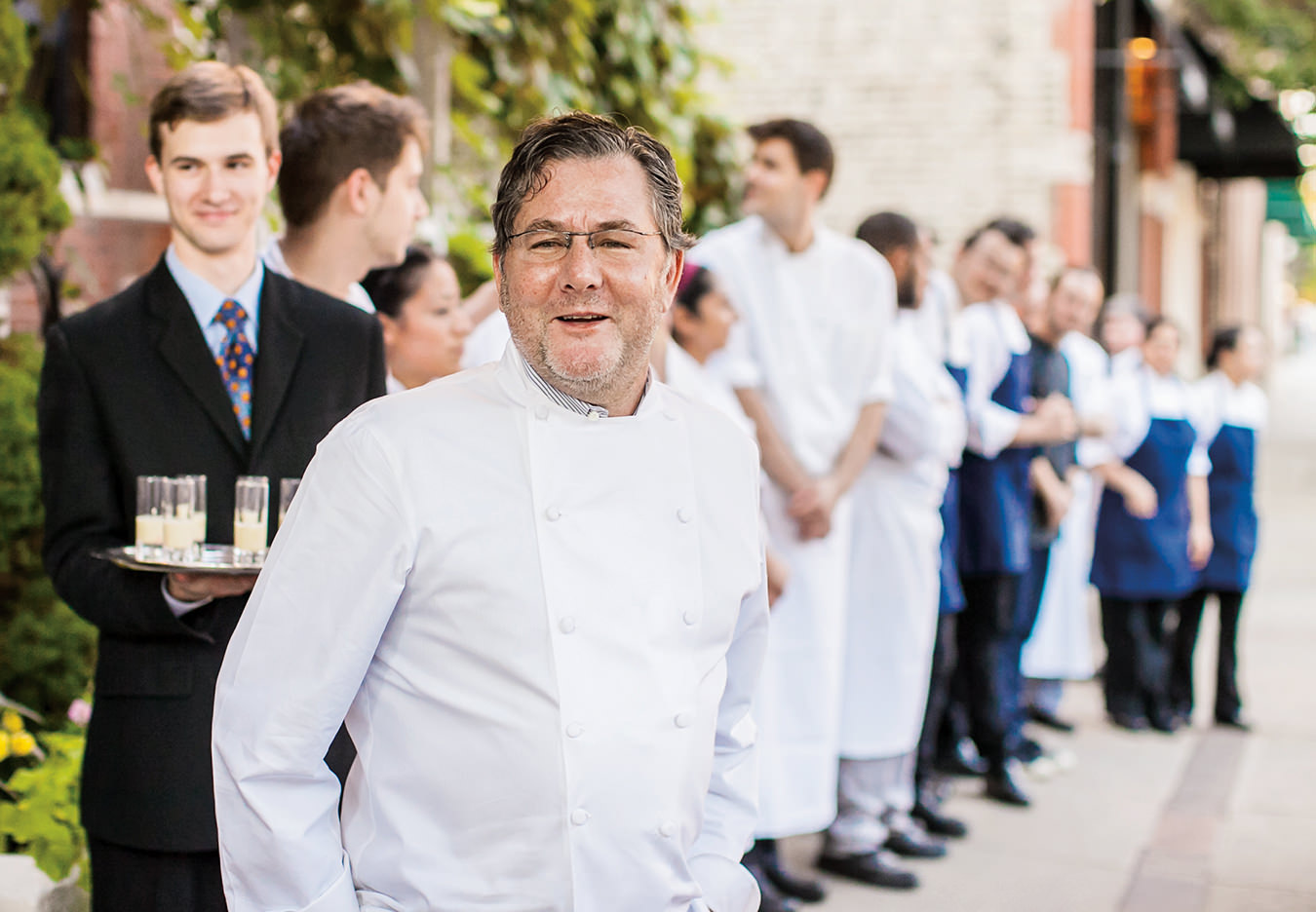-

Anish Kapoor’s famous Cloud Gate sculpture in Millennium Park.
-
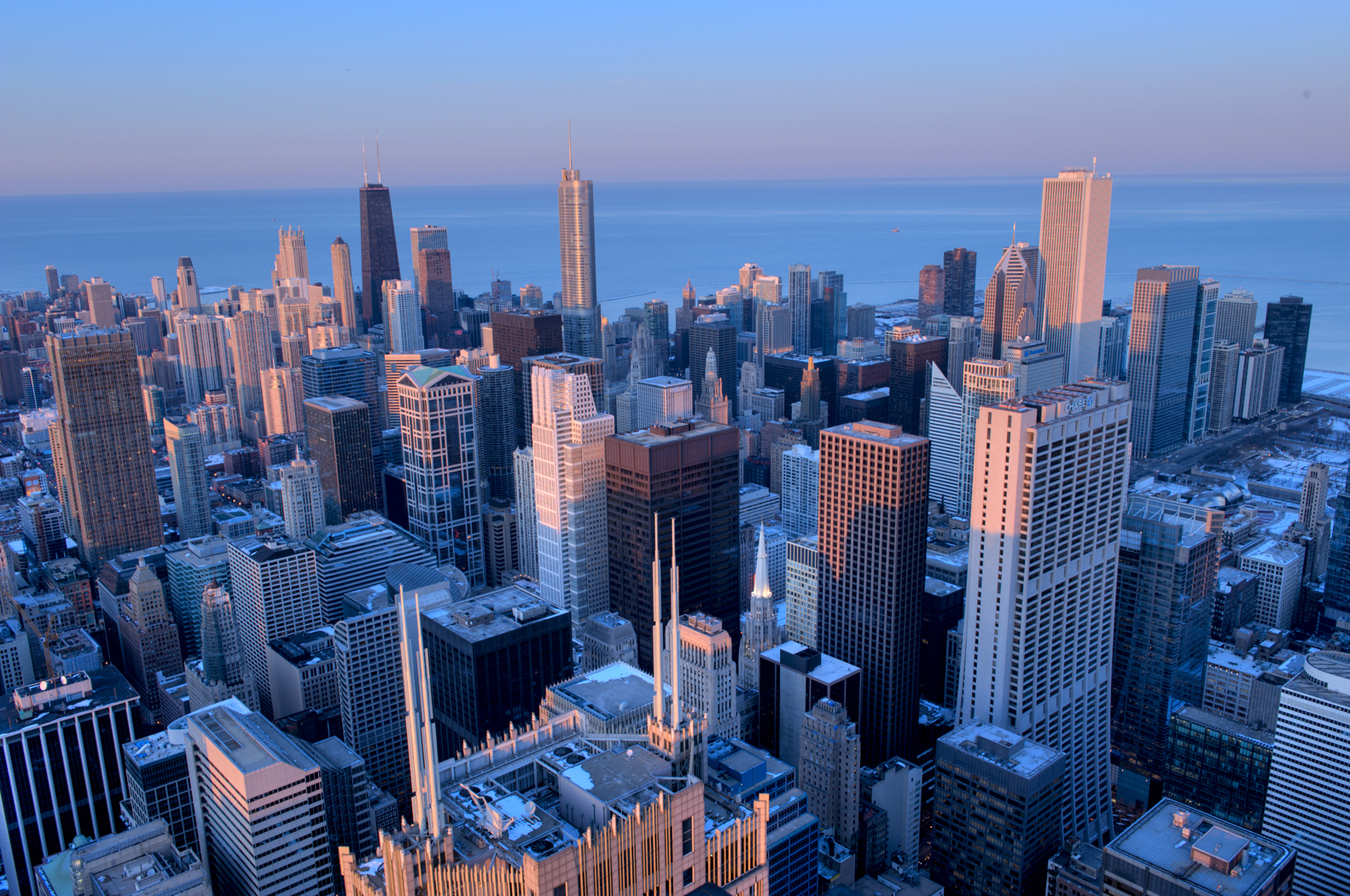
Chicago’s pink skyline at sunset.
-
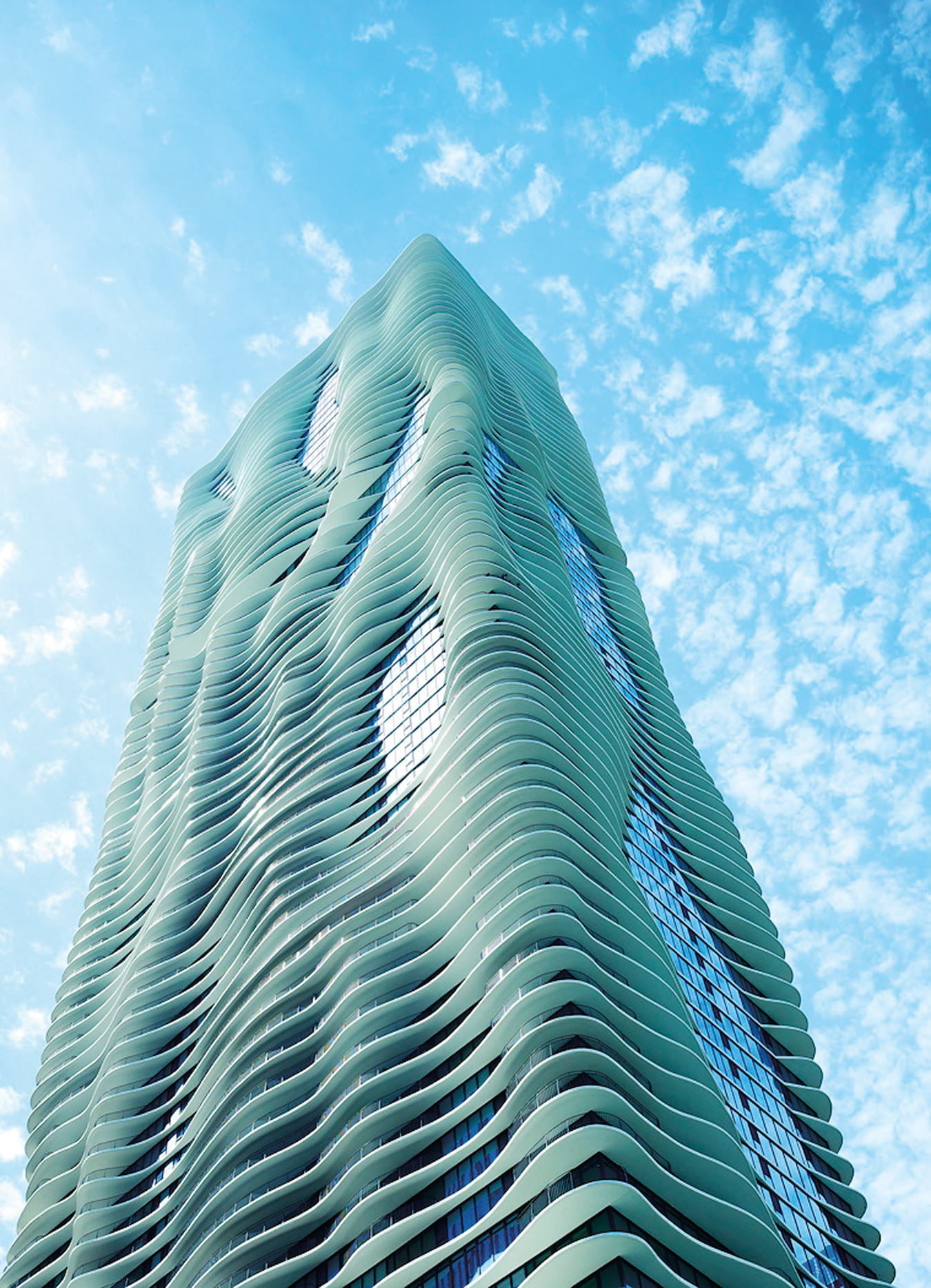
The undulating Aqua Tower designed by Jeanne Gang of Studio Gang Architects.
-
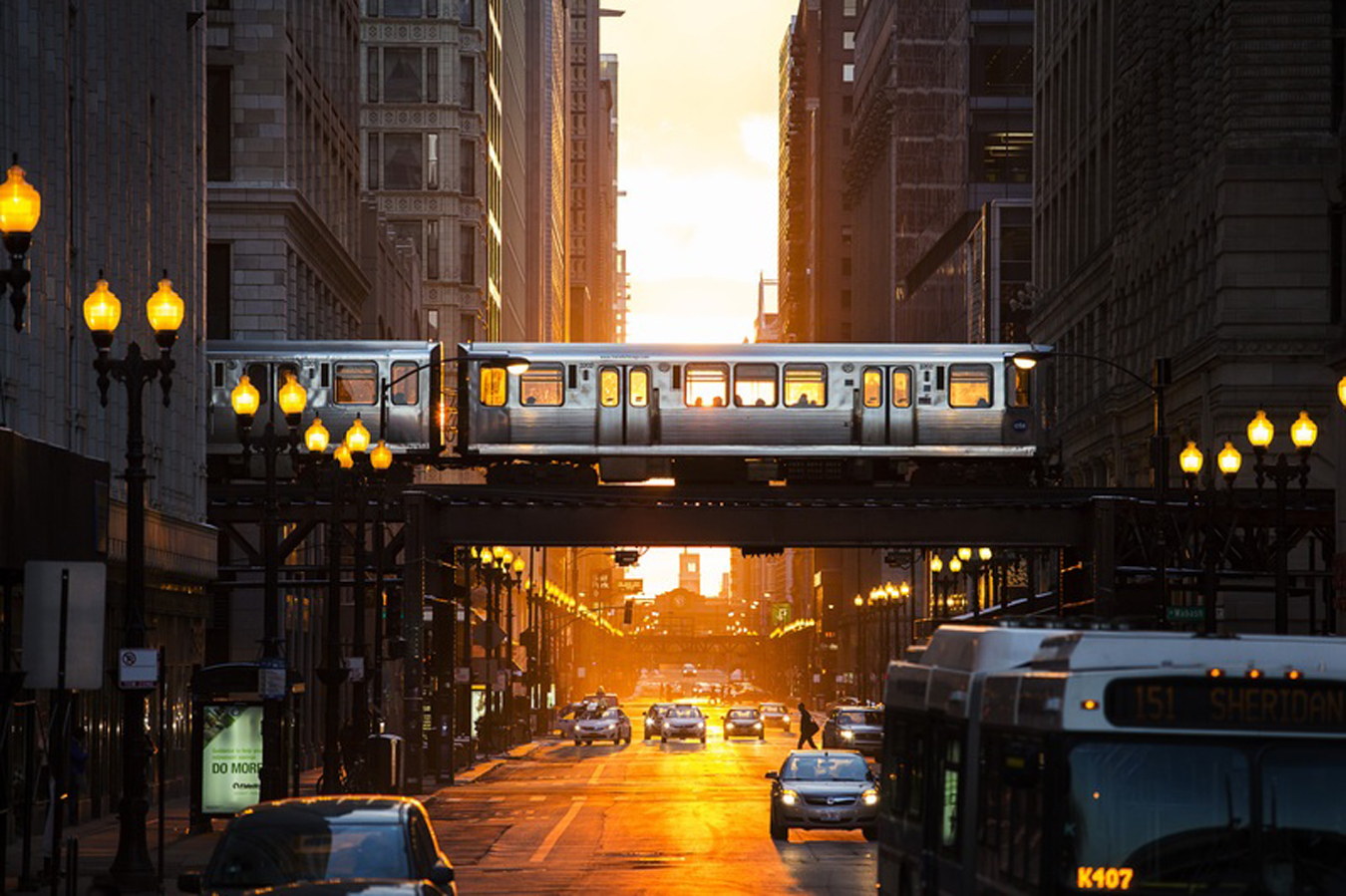
Chicago makes no little architectural plans.
Sky Lines
Chicago, an architectural beacon.
There are architectural boat tours, and then there’s the Chicago Architecture Foundation’s River Cruise, the best of them all. Not just because it passes through some of the richest architectural landscape in the world, but also because each of the docents is a passionate expert on their city, tracing Chicago’s meteoric rise over the last century-and-a-half with humour and without boosterism.
Like Danes are with design, it seems all Chicagoans are fluent in the language of architecture, discussing it the way armchair quarterbacks discuss sports. The foundation may be partly responsible for this; since 1966 they’ve raised design literacy for visitors and residents alike with programs, tours, and a gallery space on South Michigan Avenue that contains an impressive replica model of Chicago’s downtown Loop neighbourhood.
This fall the inaugural Chicago Architecture Biennial will add to those efforts, inviting an international list of architects, artists, theorists, and commentators to participate in exhibitions and large-scale installations around the city that will demonstrate why architecture and urbanism matters to contemporary society. With Chicago’s rich history, it’s the ideal place to have this conversation.
It’s common knowledge that the Chicago River was reversed, but there’s something about being aboard the foundation’s tour boat in that river, passing one stunning skyscraper after another and floating by the new Riverwalk that reclaimed a half-dozen blocks for pedestrians, that the scale of Chicago’s monumental ambition is best appreciated. They reversed a river. There’s more too: during the 1850s and 1860s, the streets, sidewalks, and buildings of central Chicago were jacked up almost two metres due to the lack of drainage in the low-lying city. When the Great Fire of 1871 destroyed over eight square kilometres of the city, it was quickly rebuilt, in stone rather than wood, and was ready to host the World’s Columbian Exposition in 1893.
It was that event that galvanized the idea of Chicago as an architecture capital, with legends like Daniel Burnham and Frederick Law Olmsted creating buildings and landscapes that influenced cities around the world. Architecture always seemed to matter in Chicago, a city where you can pass numerous buildings by Frank Lloyd Wright, Ludwig Mies van der Rohe, and dozens of other big-name architects routinely. The most stunning recent addition to the skyline is arguably Aqua Tower, an 87-storey residential and commercial skyscraper designed by Jeanne Gang and her Chicago-based firm Studio Gang Architects that features undulating, wave-like balconies that appear and disappear as the building rises.
A block from Aqua, in Grant Park by the Frank Gehry Pritzker Pavilion and Anish Kapoor’s Cloud Gate bean sculpture, is Maggie Daley Park. Opened earlier this year and designed by Michael Van Valkenburgh Associates, it’s a children’s wonderland that seems like something out of the imagination of Dr. Seuss. A 400-metre skating ribbon winds its way around the park, even going up and downhill—a unique take on the traditional skating oval. With dozens of slides, an enchanted forest, a splash pad, and wild jungle gym, it puts, as one Chicago Parks official said, “a little bit of danger and decision making back in kids’ lives.”
North of downtown, the 606 is another grand project just opened this year: a linear park created in a 1913 elevated concrete channel that once carried a freight railway line. Comparisons to New York’s High Line are immediate, but the 606, named after the Chicago zip code, is, at its core, useful. Where the High Line is a whimsically designed promenade for pedestrians only, the 606 is a shared path for bikes and pedestrians, with many fully accessible access points along its 4.3-kilometre (2.7-mile) route. It connects four different neighbourhoods and is even lined with edible serviceberry shrubs, part of the 606’s public art component.
Chicago makes no little plans, as Burnham once suggested; the budget for the 606 was $95-million and Maggie Daley Park’s was $60-million (both U.S.). When praise of Chicago’s glories gets too loud, critics will rightly point to the incredibly high murder rate and disparity between the rich and the poor parts of the city that get left out of the prosperity. To that end, the Biennial is taking a bold step in choosing the Stony Island Arts Bank as one of its venues. Located in the south side of Chicago, the once abandoned and decaying 1923 bank has been restored by artist and cultural entrepreneur Theaster Gates and his Rebuild Foundation.
Projects like this one and the Biennial itself ensure Chicago will remain North America’s architecture capital.


